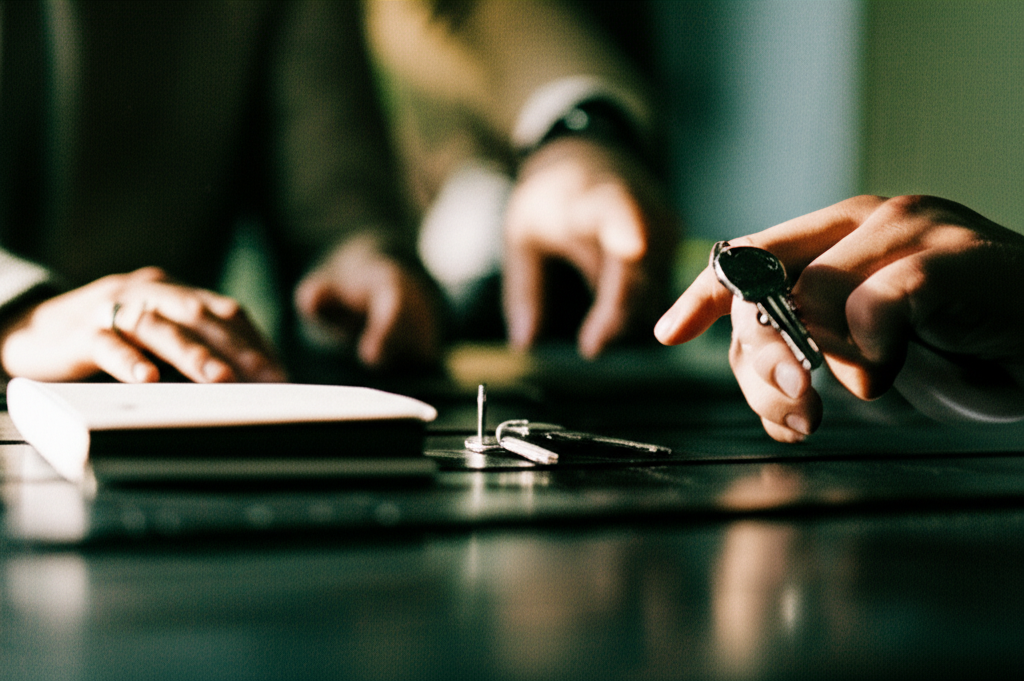Bridging the Digital Divide in Global Education
Ellie Moore

Photo: Bridging the Digital Divide in Global Education
Bridging the Digital Divide in Global Education: A Path to Equitable Learning
In an increasingly digital world, education is no longer confined to physical classrooms or textbooks. The shift towards online learning, digital tools, and technological integration has opened doors to new opportunities for students globally. However, there’s a significant challenge the digital divide which affects millions of students, particularly in underdeveloped and rural regions. Bridging this divide is crucial to ensuring that all students, regardless of their background or location, have access to high-quality education. This article delves into the digital divide in global education, why it’s critical to address, and actionable solutions to bridge the gap.
What Is the Digital Divide in Education?
The digital divide refers to the gap between those who have access to modern information and communication technologies (ICT) and those who do not. In the context of education, it primarily manifests in unequal access to devices, internet connectivity, and digital literacy. While many urban and affluent communities enjoy seamless access to high-speed internet and cutting-edge devices, rural and impoverished areas often struggle with basic digital resources.
Why Does the Digital Divide Matter in Education?
The digital divide isn’t just about technology it’s about equity, opportunity, and future success. In education, access to digital tools can be the difference between falling behind and thriving. Here are several reasons why bridging this divide is crucial:
- Access to Learning Resources: Students with internet access can access a wealth of educational materials, from online courses and e-books to virtual classrooms. In contrast, those without access are often left behind, unable to fully participate in modern education.
- Equality of Opportunity: The digital divide reinforces educational inequalities. Students without proper digital tools and internet access face significant disadvantages, limiting their academic and career prospects.
- Global Competitiveness: In a world where digital literacy is an essential skill for nearly every profession, students without access to technology will be at a disadvantage in the global workforce.
- Impact on Remote Learning: The COVID-19 pandemic underscored the critical role of digital technology in education. While some students thrived in remote learning environments, others faced barriers like lack of devices or stable internet, leaving them excluded from essential educational experiences.
The Scope of the Digital Divide in Education
The digital divide in education is a global issue, with varying degrees of impact across regions. According to a 2021 UNESCO report, almost 500 million students worldwide still lack access to a household computer or the internet. While this divide is widespread, it’s particularly stark in:
- Developing Countries: In many low-income nations, students face barriers like unreliable internet infrastructure, high costs of devices, and limited local educational resources.
- Rural Areas: Even in more developed countries, rural areas often struggle with slow internet speeds or lack of broadband altogether. In the United States, for instance, nearly 1 in 4 rural households lacks access to high-speed internet.
- Low-Income Families: Within wealthier countries, students from lower-income families may not have the necessary technology or internet access to engage with digital learning platforms. In the UK, a study revealed that 1 in 10 children were unable to access a computer or reliable internet during lockdowns, highlighting the disparity within developed nations.
The Role of Technology in Education
While the digital divide creates challenges, technology also holds immense potential to level the playing field. Digital tools, online resources, and virtual classrooms can enhance education in unprecedented ways. Here are some ways technology is transforming education:
- Personalized Learning: Digital platforms enable adaptive learning systems that tailor lessons to individual students' needs, helping them learn at their own pace.
- Access to Global Content: With the internet, students can access educational content from anywhere in the world, whether it’s a course from a prestigious university or a tutorial on a niche topic.
- Collaboration and Communication: Technology allows students to collaborate with peers globally, broadening their perspectives and creating a more connected world.
- Teacher Support: Teachers benefit from digital tools that help them create engaging lessons, track student progress, and offer personalized feedback.
Bridging the Digital Divide: Practical Solutions
Addressing the digital divide in global education requires a multifaceted approach, involving governments, private organizations, and local communities. Below are some actionable strategies to bridge the gap:
1. Invest in Infrastructure and Connectivity
Governments and organizations must prioritize the expansion of reliable internet infrastructure, especially in rural and underserved areas. Initiatives like satellite-based internet (e.g., SpaceX’s Starlink) and wireless broadband can significantly improve internet access in hard-to-reach regions.
- Public-Private Partnerships: Governments can collaborate with tech companies to subsidize internet access or offer discounts for students and schools.
- Community Wi-Fi Programs: In rural or low-income areas, offering free community Wi-Fi hubs in local libraries, community centers, and other public spaces can help bridge the gap.
2. Increase Access to Devices
Ensuring that students have access to the devices they need is a critical component in narrowing the digital divide. Strategies include:
- Device Donation Programs: Schools and nonprofits can launch device donation drives to provide students with laptops, tablets, and other digital tools.
- Affordable Devices: Manufacturers can create low-cost, education-focused devices that meet the basic needs of students while being affordable for low-income families.
3. Enhance Digital Literacy Education
Digital literacy is just as important as access to technology. Students and teachers must be equipped with the skills to navigate and use digital tools effectively. Programs that focus on digital literacy training can empower students to make the most of the tools available to them.
- Teacher Training: Teachers must receive training not only on how to use digital tools but also on how to teach digital literacy effectively. This ensures that all students, regardless of their background, can harness the power of technology.
4. Leverage Open Educational Resources (OER)
Open Educational Resources (OER) are freely accessible, openly licensed materials that can be used for teaching and learning. Governments, schools, and NGOs should promote the development and distribution of OER, especially for students in areas with limited resources.
- Free Online Courses: Platforms like Coursera, Khan Academy, and edX offer free courses that can supplement formal education, making high-quality learning accessible to all.
5. Government and NGO Involvement
Governments must recognize the importance of bridging the digital divide and take proactive steps to address it. This includes increasing funding for digital infrastructure, launching nationwide educational technology initiatives, and collaborating with non-governmental organizations (NGOs) to reach underserved communities.
- Funding and Grants: Governments can allocate funds to schools in underserved areas to purchase technology and improve connectivity. They can also offer grants to tech companies and NGOs working on digital inclusion projects.
6. Encourage Global Collaboration
Addressing the digital divide requires global cooperation. International organizations, such as UNESCO and the UN, can play a key role in fostering collaboration among nations, sharing best practices, and coordinating efforts to provide equitable access to education.
- Cross-Border Partnerships: Countries can partner to share technological solutions, knowledge, and resources to ensure that all students benefit from digital education.
The Path Forward: A Call to Action
Bridging the digital divide in global education is not just about providing access to technology it’s about creating opportunities for all students to succeed in an increasingly digital world. To achieve this, governments, organizations, and individuals must work together to tackle this challenge head-on.
If you are an educator, policymaker, or philanthropist, your role is crucial in creating a more equitable educational landscape. Start by advocating for better infrastructure in underserved areas, supporting digital literacy initiatives, and investing in affordable devices for students in need.
Call to Action: Join the movement to bridge the digital divide in education. Share this article with your network, comment below with your thoughts or experiences, and explore related content on how technology can empower global education.
Frequently Asked Questions (FAQ)
What is the digital divide in education?
The digital divide in education refers to the gap between students who have access to digital tools and the internet, and those who do not. This inequality affects students' ability to engage in modern learning environments.
How can we bridge the digital divide?
Bridging the digital divide requires expanding internet infrastructure, providing affordable devices, increasing digital literacy, and fostering global collaboration among governments, organizations, and communities.
Why is digital literacy important?
Digital literacy is essential for students to fully benefit from digital education tools. It empowers them to use technology effectively and prepares them for future careers in a technology-driven world.
What are Open Educational Resources (OER)?
OER are free, open-licensed educational materials that can be used, shared, and modified by anyone. They provide an affordable solution to improve access to quality educational content worldwide.
Finance & Investment
View All
November 20, 2024
Is It Time to Hire a Financial Advisor? Here’s What You Should KnowWondering if you need a financial advisor? Learn the signs and benefits of hiring one. Discover how they can help you achieve your financial goals and navigate complex decisions.
Ellie Moore

June 21, 2025
Subaru Financing Deals for Smart DriversElevate your online presence with expert SEO content. Drive organic traffic, boost rankings, and build brand authority through quality and value.
Ellie Moore

February 26, 2025
Kamala Harris Campaign FinancesElevate your SEO with expert content. Focus on E-E-A-T to build authority, trust, and genuine value for users and search engines.
Ellie Moore

January 8, 2025
Affordable Dental Implant FinancingDrive organic growth with expert SEO content. Understand E-E-A-T to create high-quality, valuable content that ranks higher and attracts your target audience.
Ellie Moore

March 25, 2025
Inside the Work of the Senate Finance CommitteeGo beyond basic content. Discover how expert SEO content drives rankings, builds authority, and attracts sustainable organic traffic for lasting online success.
Ellie Moore

January 25, 2025
Buy Land Easily with Owner FinancingUnlock online success with expert SEO content. Learn to create valuable, authoritative content that ranks high, builds trust, and aligns with Google's E-E-A-T.
Ellie Moore
Insurance
View AllNavigate dental insurance with our guide. Find essential plans for comprehensive coverage, financial security, and peace of mind for you or your business.
Ellie Moore
Remote work brings new risks—find out what insurance coverage digital nomads and remote workers need in a changing world.
Ellie Moore
Unlock growth & security with top-rated insurance agency services. Guide for agents, policyholders & risk managers to optimize operations & mitigate risks.
Ellie Moore
Don't settle for basic car insurance. Get a premium quote for superior, comprehensive coverage. Protect assets & ensure financial security for policyholders & r...
Ellie Moore
Discover how artificial intelligence simplifies claims, enhances accuracy, and speeds up insurance processes.
Ellie Moore
Unlock peace of mind with Top-Rated Farm Bureau Insurance. Get comprehensive protection and financial security for your assets, tailored for policyholders and r...
Ellie Moore
Education
View AllDifferentiated instruction helps teachers reach diverse learners. Find out how tailored teaching improves outcomes for every student.
Read MoreUnderstand dyslexia and discover effective ways to support dyslexic students in the classroom. Learn proven strategies to improve learning outcomes.
Read MoreFinancial literacy is essential for today’s students. Discover why teaching money management early can lead to smarter financial decisions.
Read MoreLearn how UNESCO promotes education for all globally. Explore key initiatives and efforts aimed at fostering equal learning opportunities for everyone.
Read MoreDiscover why liberal arts education remains valuable in today’s tech-driven world. Explore how it fosters critical thinking and adaptability.
Read MoreOnline homeschooling communities are growing fast. Explore how they provide support, resources, and a sense of belonging to families worldwide.
Read MorePopular Post 🔥
View All
1
2
3
4
5
6
7
8
9
10
Health






Automotive
View All
August 22, 2025
Dannys Automotive Fast Reliable Service
Danny's Automotive offers fast, reliable service. Get expert vehicle care combining speed with precision and trust, without compromising your schedule.

September 8, 2025
Country Automotive Local Experts Who Care
Country driving demands trusted auto repair. Learn why local experts who genuinely care are essential for your vehicle's reliability and your peace of mind.

July 11, 2025
Get The Best Automotive Window Tinting Near Me
Boost your car's look, comfort & protection with window tinting. Learn about benefits & find the best automotive tinting service near you.

September 11, 2025
Jay's Automotive Gets The Job Done Right
Jay's Automotive: Experience reliable, expert car repair. We get the job done right every time, ensuring your vehicle's safety & your peace of mind.

August 29, 2025
Southeast Automotive Trusted Local Repairs
Navigate auto repairs in the Southeast with confidence! Find trusted local shops for expert care & lasting peace of mind.

August 6, 2025
Clear Choice Automotive Solutions For Your Car
Experience worry-free car ownership with Clear Choice Automotive Solutions. Get transparent, reliable care & make informed decisions for peace of mind.

















